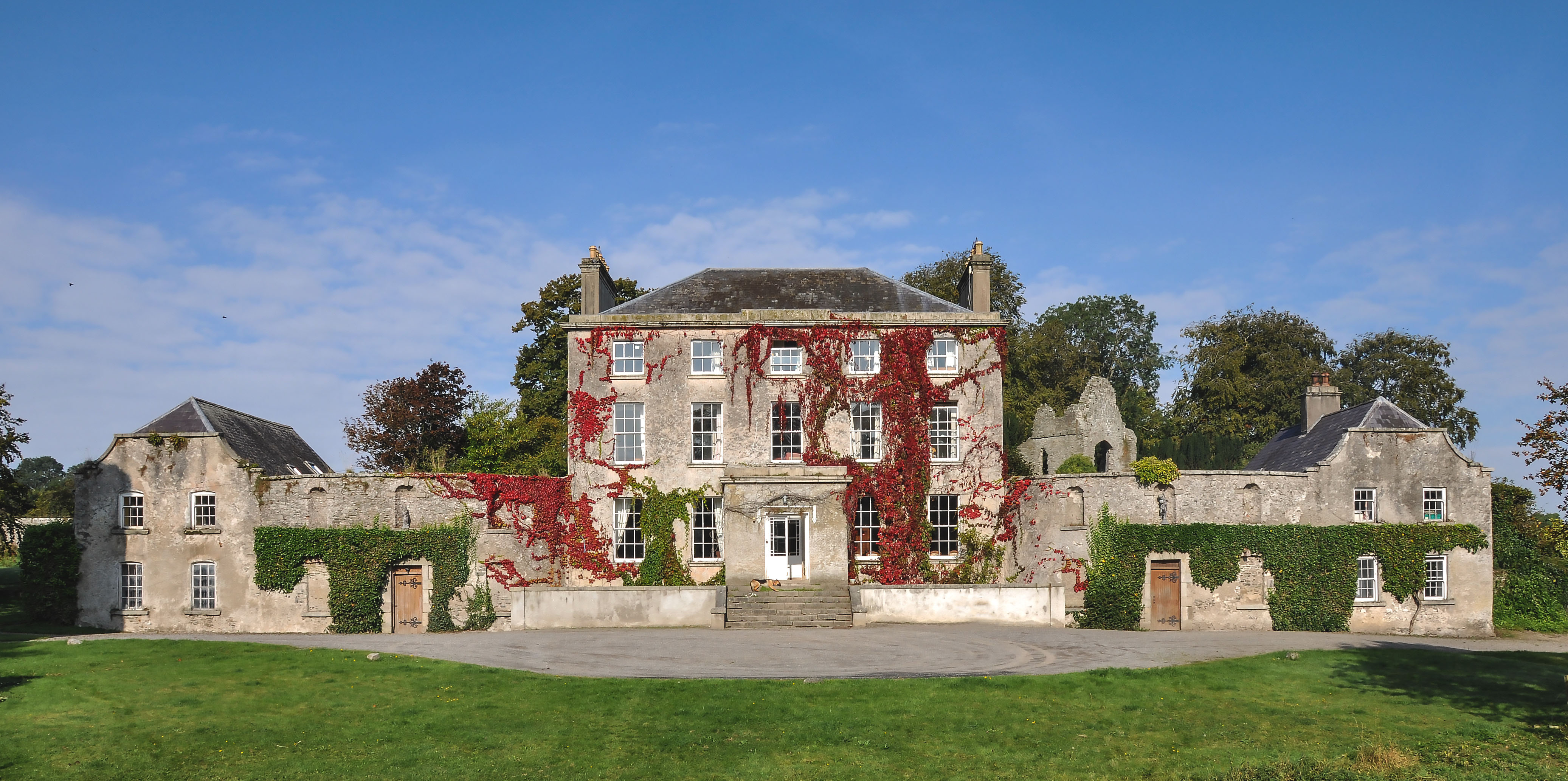Moone Abbey
Moone Abbey, near the border between Counties Kildare and Carlow, is of special interest to historic building aficionados because the estate comprises a rare concentration of building types and styles that illustrate more than a thousand years of Ireland’s turbulent history. Behind the mid-18th century Palladian house are the remains of Moone Abbey, a monastery originally founded in the 6th century by St. Columkille and rebuilt almost 700 years later. The abbey contains the splendid High Cross of Moone, rediscovered amidst the ruins during the nineteenth century, while the house’s mediaeval predecessor stands a little way off; a ‘Ten Pound’ tower house in remarkably fine condition.
The monastery was duly suppressed and dissolved in the sixteenth century, and its lands ultimately passed to the Jacobite O’Dempsey family who lived in the nearby tower house, one of a special type encouraged under statute to help fortify the Pale, the area of English influence of fluctuating size with its centre at Dublin. In return for building a defensive castle or tower, 20’ long, 16’ wide and at least 40’ high, dimensions that were smaller than those of a typical Irish tower house, landowners received a subsidy of £10 to help defray their expenses, perhaps the earliest instance of that must-loved Irish institution, the building grant.
After the Williamite wars the estate was granted to a Cromwellian soldier, Thomas Ashe, who was buried in the nearby Rath of Moone, and was subsequently leased for 999 years to Samuel Yates who completed the current house in about 1750. Yeats’ new house consisted of a central block, five bays wide and two of storeys over a basement, with a single bay central breakfront surmounted by a pediment with a Diocletian window. A pair of matching wings are connected at the corners by curved two storey quadrants and, unusually, their curve is convex rather than concave. The wings have half-hipped roofs, partly hidden by charming ogee gables, while the nearby tower house was converted into a handsome pigeon loft.
The central block was rebuilt c. 1800 after a serious fire, when it was clad in cut stone, given an extra storey and a hipped roof with a shallow parapet, while the pediment was replaced by an elegant elongated stone block. Later in the nineteenth century the entrance was encased by a simple single storey porch.
Members of the Yates family were no strangers to drama. One was piked to death by the Ballytore rebels in 1798, suspected of alerting the authorities to their activities. Another was prosecuted for abusing his position as High Sheriff to seduce a young woman from Castledermot, while the 1800s fire was allegedly the result of a family feud that got out of hand. Eventually, their unconventional behaviour took its toll on the family finances and in the 1840s they were forced to sell under the Encumbered Estates Act after a tenure of almost a hundred years.
The purchasers were the O’Carroll family, who themselves sold out to the Bolands in 1910 while the estate was bought by a member of the princely German family of Hohenlohe in 1960 and their descendants still live at Moone today. Nearby is the famous castellated flour mill of the Shackleton family, ancestors of Sir Ernest the polar explorer, while the whole complex is approached from Moone village through a pair of splendid piers that originally formed one of the entrances to Belan, the long demolished great house of the famous collector, connoisseur and patron, Lord Aldborough.
Address & Contact
Moone Abbey, Moone, KildareAvailable as a Film Location
Houses and Garden
Groups by Arrangement
Accommodation and Short Breaks
Holiday Cottages


